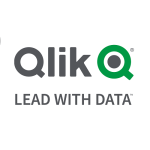The solution is a dashboard. We have the on-premises data gateway, which allows us from the Azure Cloud to get into Power BI. The dataset content comes from the on-premise data warehouses.
We have produced historical analytics and KPIs from ServiceNow for Incident management, performance, SLA coverage, trends, and identifying anomalies. Anomalies are, for example, if a ticket is reopened, that means it was closed incorrectly or the solution was not correct. If a ticket has been an incident or a request has been routed more than two times, that means somewhere in the processes it was not clear and the ticket is going in circles out to the anomalies data.
A lot of analytics based on ServiceNow and Gyra as ITSMs systems. There is also combined analytics between Salesforce and for example, Web analytics, Google Analytics, and so on. Allowing us to see how visits to the website translate into lead opportunities. This is done by combining the two, extracting them and combining the two sources of data, such as Google Analytics and Salesforce.
Some of the most valuable features of this solution are the ability to take your data and have the possibility to combine them into datasets and have synchronization.
You are able to synchronize the data without additional cost eight times a day and you can set when you want to synchronize it. For example, during business hours, we synchronize the data once an hour and during the night I do not synchronize it at all.
The capability to add custom visuals and create Power BI apps. You can package datasets, synchronization details, and dashboards into a single app.
Microsoft is open to suggestions for improvements in future releases. We requested to allow Python Notebooks to be displayed as visuals on top of the datasets, which now available and was not five versions ago.
The possibility to synchronize more often without having to pay more would be great. They asked you to pay if you want to synchronize more than eight times, you would have to go to a Power BI enterprise license, which is much more costly.
I have been using the solution for three years.
I have found the solution to have high performance and to be reliable.
The solution is highly scalable. We have approximately 100 people using the solution in my organization.
The solution is a service, which does not require a traditional installation. However, there is a large configuration portion. It can be very simple to configure minor operations but can become complex if you connect via Power BI, a lot of sources. For example, from on-premise and from multiple clouds. It allows you to go from very simple, to very complex. It is up to your solution design in the end.
You can create your first dataset in a matter of hours. This once again is dependent on your configuration.
The solution requires maintenance but not to the Power BI itself. The configuration is deployed on top of Power BI, you can set automatic alerts if, for example, the data is not synchronized or It not available.
The price of the solution can be expensive if you want to synchronize your data more.
I rate Microsoft BI an eight out of ten.
















